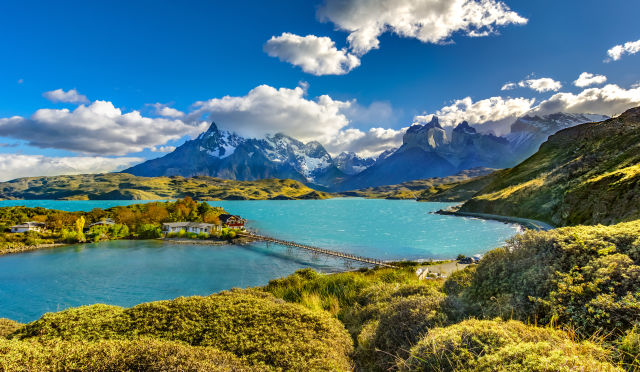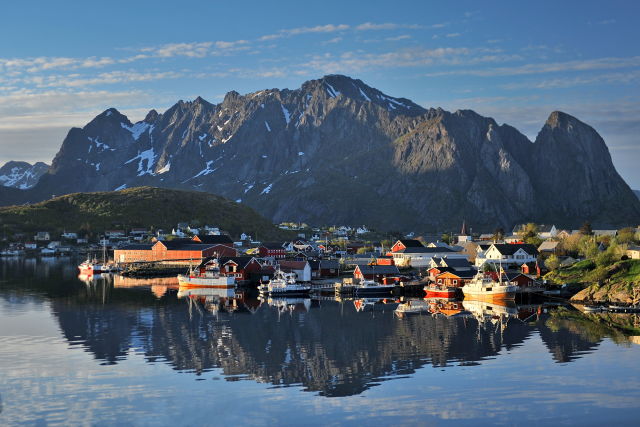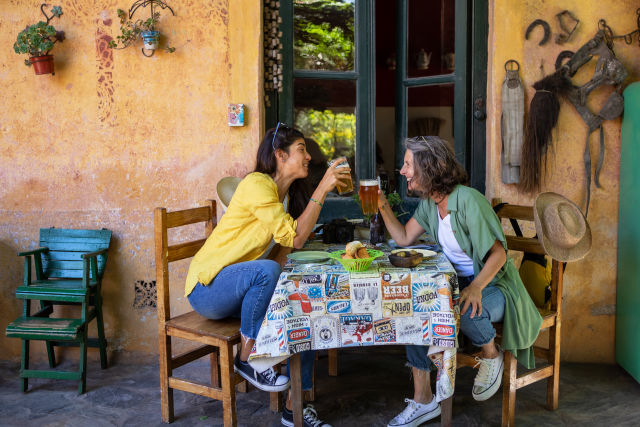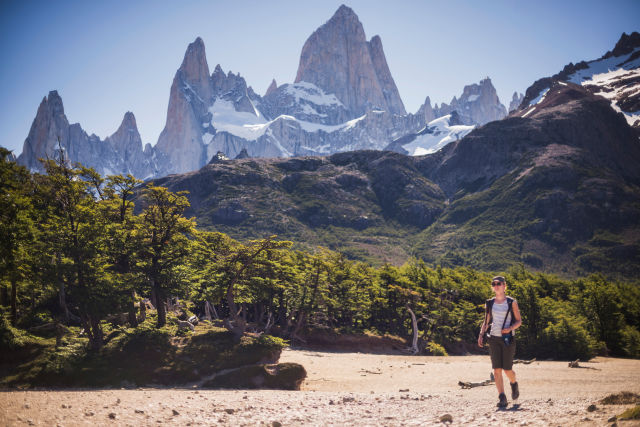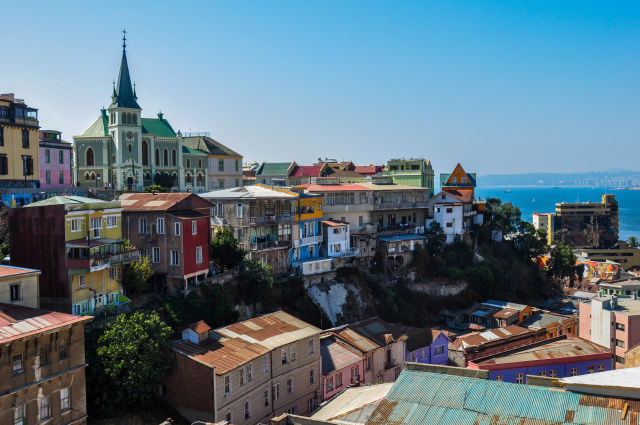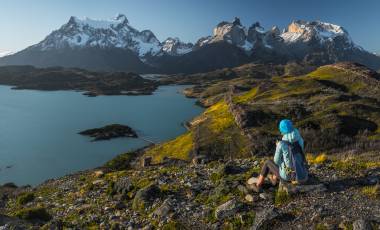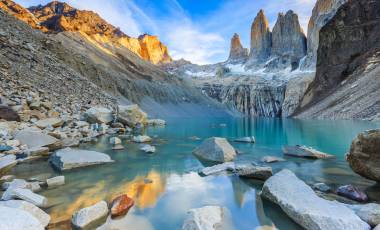Absolutely stunning scenery but a lot of travelling and very little choice if vegetarian. Iguazu falls should be included if you can!
Trip notes very out of date, allow for much higher prices for optional activities and tipping.

Patagonia Trek
- Home
- South America
- Chile
- Patagonia
Unmissable Places to Visit in Patagonia
Tours to Patagonia
Spanning the distant reaches of South America, covering deserts, mountains, grasslands and frigid shores, Patagonia is a magnificent and diverse region. Our Patagonia hiking tours guide you through this ruggedly enchanting frontier, where nature’s grandeur takes center stage. From Ushuaia in Argentina to the tip of the Andes, their great rocky spires towering over the landscape, Patagonia’s raw wilderness and natural beauty are breath-taking.
Whether you prefer to set off on foot and challenge yourself to one of the great treks or discover the culture in depth, a Patagonia tour lets you experience it all. The huge scale of its landscapes is mind-blowing, with imposing peaks, tranquil backwaters and rivers that flow through national parks. Torres del Paine National Park is one of the most famous in Chile’s Patagonian region and is home to grasslands, mountains and icebergs that calve from giant glaciers. And there’s plenty of wildlife to spot on a Patagonia tour with animals such as llamas, Andean deer and the Chilean flamingo.
Throughout our tours, an expert leader will take you to some of the most remote corners, including Ushuaia, the southernmost city in the world to the windswept Patagonia Steppe on the southern tip of the continent. Along the way you’ll discover many of nature’s wonders such as the El Tatio geysers, the Osorno Volcano and the altiplano lagoons. A highlight of the journey is the mesmerizing sight of the sun setting over the Valley of the Moon in the Atacama Desert, an experience that will leave you in awe of Patagonia’s extraordinary splendor.
Our Top Destinations in Patagonia
Our Best Patagonia Tours
Julia Martin Patagonian Highlights
Jane McVeigh Discover ChileGreat holiday from start to finish. Varied itinerary – I felt as if we’d covered a lot of ground & gained a good insight into the various areas/culture etc of Chile.
Dee R Discover ChileFrom snow-capped mountain peaks, lakes, volcanoes, glaciers to the desert, Chile had so much to offer! We covered so much in 2 weeks. This trip is the perfect way to see the country and the main highlights. We managed to see to some key wildlife such as Condors, Guanacos, Viscacha, Flamingos, and various more. Miguel, our leader was truly exceptional as a local leader as he had all the knowledge from wildlife, culture to geothermal, he had all the answers to our questions. Some of the hotels we stayed at were great from the views of Lake Pehoe from Hosteria Pehoe to the pool and outdoor area in San Pedro de Atacama, it was great to chill after some early starts.
FAQs on Patagonia Treks
Where is Patagonia?
Patagonia is a vast region located at the southern end of South America, shared between Argentina and Chile. It stretches from the southern Andes down to the tip of the continent, encompassing a variety of landscapes including mountains, glaciers, deserts, and grasslands.
Does Patagonia have good trekking?
Patagonia is renowned for its exceptional trekking opportunities, offering a range of routes that showcase its dramatic landscapes and natural beauty. Among the most famous is the Torres del Paine Circuit in Chile’s Torres del Paine National Park, a challenging multi-day trek renowned for its granite towers, turquoise lakes, and glaciers.
On a small-group, guided Patagonia trek with Exodus, you can expect an expertly designed adventure that blends physical challenge with cultural immersion. Your journey will include trekking through diverse landscapes, from verdant valleys and terraced fields to rugged mountain paths and snow-capped peaks.
Our treks are designed to accommodate various fitness levels, with options for both challenging hikes and more leisurely walks. Check your trip notes for the activity rating for more information on your trek’s intensity level.
Our Classic Patagonia Trek is rated challenging. It is preferable to have experience of long hikes in varied and irregular terrain. The hiking is not dangerous or technically difficult, but you must be a confident hiker with good fitness levels to manage the sections of ascent and long duration of the treks. Looking to explore Patagonia in a less active way? Our Patagonian Highlights tour is a culture based tour that gives you a small taste of trekking with day hikes within a less intensely physical itinerary.
The tallest peak in Patagonia is Cerro San Valentín, also known as Monte San Valentín. It stands at approximately 13,313 feet above sea level. Located in the Northern Patagonian Ice Field, which straddles the border between Chile and Argentina, Cerro San Valentín is the highest point in the Patagonian region. Its impressive height and the surrounding glaciers make it a striking feature of Patagonia’s rugged landscape.
The best time for a trek in Patagonia largely depends on what kind of experience you’re looking for. Generally, the ideal period for trekking in Patagonia is from late spring to early autumn, which spans from November to March.
During these months, the weather is relatively milder and more stable, with longer daylight hours and less risk of heavy snowfall. This is also the summer season in the Southern Hemisphere, which means warmer temperatures and more accessible trails.
It’s important to note that Patagonia’s weather can be unpredictable, even during these months, with sudden changes in temperature and wind conditions.
To ensure your journey is as enjoyable as it is memorable, proper preparation is key. Pay attention to the activity level rating of your trip when you are booking so that you can understand approximately how far you will be hiking each day, as well as the elevation of the walks. This will give you a useful benchmark for your training.
In the weeks and months leading up to your trip, increase your daily activity level and embark on long walks, wearing the kit that you plan to wear on your tour so that you can get used to things like the weight of your backpack and thoroughly break in your boots. Increase your core exercises and ramp up your cardio to help with your trail endurance. Check out our fitness guide for more advice on the physical preparation needed for your active tour.
The Adventure Begins Here
Get regular inspiration straight to your inbox from Exodus’ experts.

